In another post, we found that while some members of the Chicago City Council have been quite outspoken (usually in support of the CTU), most have been pretty quiet. This pattern may be because while in general the CTU enjoys more public support than CPS, and as the strike has gone on they have certainly been more visible, with lively rallies, marches, and picket lines. the the signal is not always clear. For instance, CTU-led referenda to change the structure of the CPS board get strong voter support, but they are not on the ballot throughout the city. Last year, the Chicago Democracy Project conducted the Chicago Metropolitan Area Neighborhood Study (CMANS), a survey of Chicagoans’ political views. One set of questions we asked allows respondents to provide a “grade” to various institutions in their local government, including the school board and the CTU. On average, the CTU did a little better among Chicagoans (residents of the city), but the difference wasn’t huge: the CTU gets about a “C+” average, while the CPS is about a straight “C:”
We can look more closely among individuals to see what might predict which “side” Chicagoans are likely to take, though (it’s important to note that these questions are asked as evaluations, not “favorability” measures, so it’s not exactly the same as “choosing a side.”). The following figures use a measure (we’ll call it “CTUvCPS”) made by subtracting each respondent’s CPS grade (on a 0-4 scale) from their CTU grade (i.e., CTUvCPS=CTUgrade-CPSgrade). Thus, more positive values mean a respondent grades the CTU higher than CPS. Here, we can see that most respondents grade them the same:
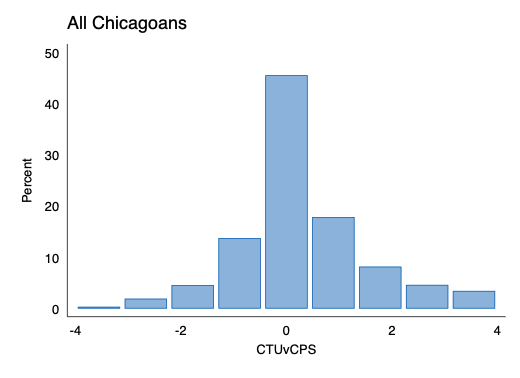
Relative evaluations of CTU v CPS among Chicago residents. Positive values indicate relatively high evaluations for CTU. (Source: CMANS)
This may have as much to do with low levels of information or the technical nature of the issues involved–most Chicagoans don’t have a strong “side” in this dispute, so probably shouldn’t be too surprised that most CMs haven’t picked one either. When we look closer, though, race and class affect these evaluations. White respondents and homeowners are more likely to support the CPS, while non-white respondents (especially African Americans, who are the most likely to give the CTU higher evaluations) and renters are more likely to support CTU. Still, the most common response in each group is to evaluate CTU and CPS the same.
Including all these factors in a multivariate regression analysis can help us account for other explanations (including income, partisanship, ideology, and how easy a grader an individual is) to reveal patterns of factors related to relatively high evaluations of the CTU. In the Figure below, we show the estimates generated by two models. First, in blue, a model of high evaluations of CTU relative to CPS (CTUvCPS, same as above). Second, in red, a model of “high grades” for CTU–the factors associated with respondents giving CTU either an A or a B. The results of the models are quite similar. Homeownership, being white, and political conservatism/Republican identification are associated with lower evaluations of CTU (relative to CPS), suggesting that individuals with these characteristics may be less predisposed to support the strikers. African Americans, Democrats/liberals, and renters leaned toward the CTU. Age, Education, and Income are not statistically significant across the models.

Regression Coefficients for Models of Evaluation of CTU and CPS among Chicagoans. Model 1, Blue points, are OLS coefficient estimates for predictors of high evaluations of CTU (relative to CPS). Model 2, Red points, are probit coefficent estimates for whether respondents gave the CTU an “A” or “B” grade. Positive coefficients indicate that the factor at left is positively associated with higher evaluations of CTU. Lines indicate 95% confidence intervals. Source: 2018 CMANS
Of course, all of these data only tell us about predispositions–what people thought long before the strike. The public action of the strike itself can serve to draw attention to the issues at hand and inform Chicagoans about an important local policy area. In my research with Northwestern’s Sally Nuamah, we’ve found that exposure to the big wave of school closures made Chicagoans less supportive of then-mayor Rahm Emanuel, especially among black Chicagoans. Based on analyses of the CMANS data, that pattern held through to 2018: among black respondents, those who reported having a family member affected by the closings were about 20-25 percent more likely to give the CTU an A or a B, as shown in the following figure.

Percent of African American respondents from Chicago giving CTU an “A” or “B” evaluation, by exposure to school closings. Source: CMANS, N=464.
The differences hold when we account for age, income, political views, homeownership, and toughness of grading (using nearest-neighbor matching). Interestingly, however, these groups’ evaluations of CPS are not much different, and this difference appears to only be present among African American respondents, not other groups (though this was the group most exposed to closures, so the numbers are small for other groups).
This final finding is consistent with the idea that Chicagoans learn from their concrete political experiences, and organizations like the CTU, who engage in both visible protest action and make efforts to persuade the broader community to join their cause (in what might otherwise be a narrow dispute between labor and management) can have an effect on public opinion. We’ll follow up with analyses of how the strike may have actually changed Chicagoans’ minds in the weeks to come!

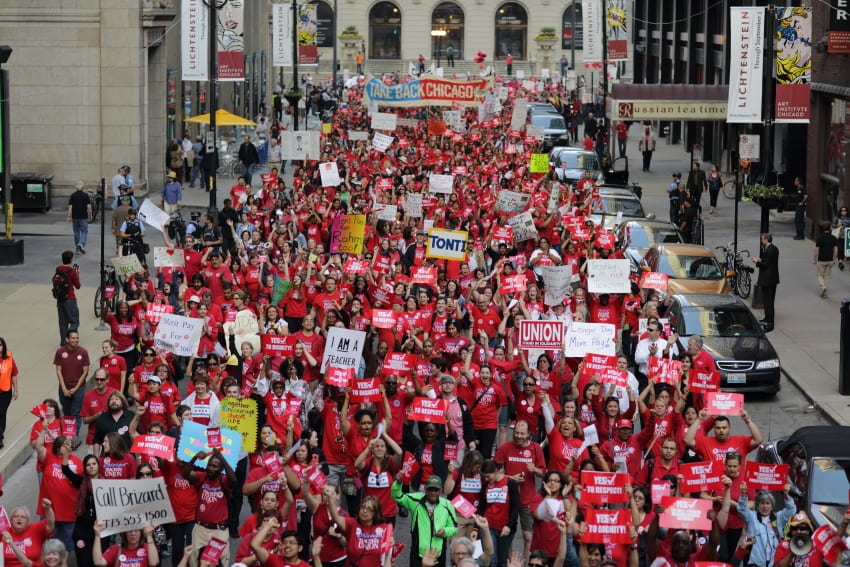


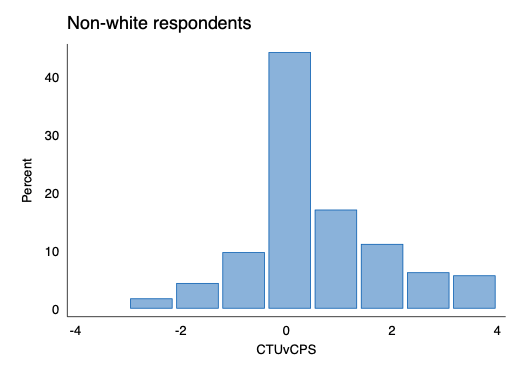
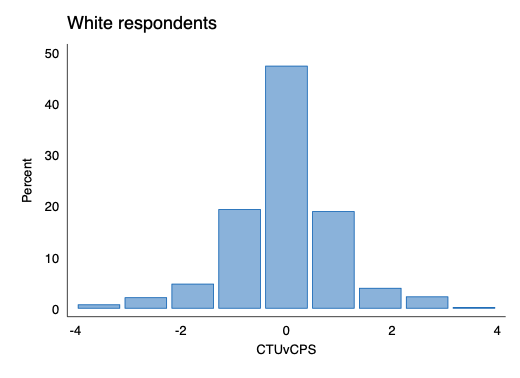
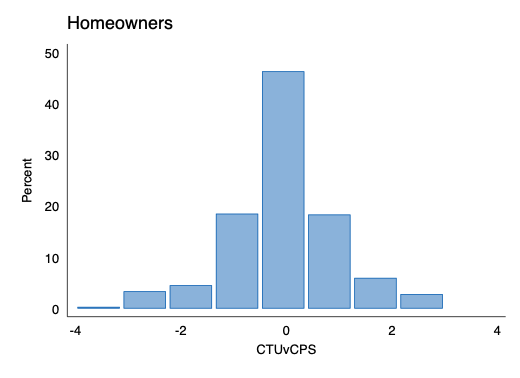

You must be logged in to post a comment.